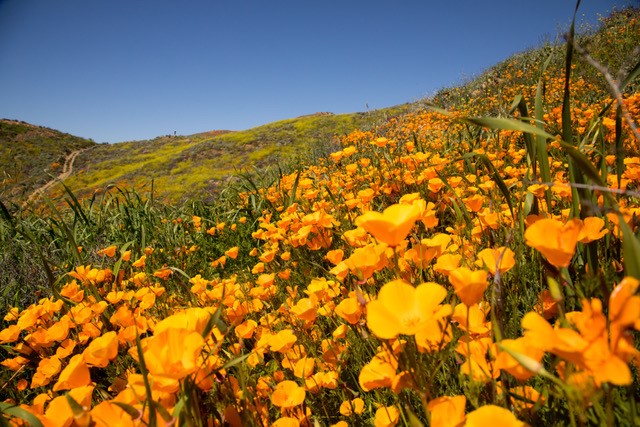By Marika Rose, Vitals contributor
We’ve heard a lot about the California Superbloom recently — the kaleidoscope of wildflowers carpeting California hillsides and state parks that typically results from years of drought followed by heavy and prolonged rain.
This year provided the perfect conditions for seeds that were dormant for years, deprived of water, to explode in all their glory. Superbloom sites are drawing thousands of visitors for a typically once-in-a-decade array.
What does the Superbloom mean for those who suffer from allergies, and will this year bring new or worse symptoms? We asked Dr. Chiraag Patel, a Sutter-affiliated allergist/immunologist practicing in Roseville, Calif.
Vitals: Is the Superbloom contributing to more patients suffering from allergies?
Dr. Patel: Typically trees produce pollen from February through the end of April, then grasses follow. This year we have not only seen grasses much earlier, but the typical tree pollens seem to affect people harsher than usual. During the last Superbloom in 2019, when an explosion of vegetation occurred, we also saw higher levels of tree and grass pollen. The array of brilliant wildflowers we are seeing on social media and along hillsides is not necessarily the culprit in the rise of allergy symptoms this year. It’s really more of a perfect storm of pollen. During a Superbloom there is not just more pollen, but more allergenic pollen.

Allergist Dr. Chiraag Patel says, “The array of brilliant wildflowers we are seeing on social media and along hillsides is not necessarily the culprit in the rise of allergy symptoms this year. It’s really more of a perfect storm of pollen.”
Vitals: Are you seeing more patients in your office with allergy symptoms?
Dr. Patel: Yes, when the concentration of allergens is higher, more patients have heightened symptoms. A few weeks ago when the rains stopped and everything started to bloom at once, many more patients than in a typical or drought year have come in with ocular symptoms: irritated, red, swollen, itchy eyes. With eye symptoms, itchiness is a hallmark of allergic reaction versus an eye infection like pink eye. We have also seen many more patients with asthma attacks and eczema flares, some of whom have already been hospitalized.
Vitals: What can people do to lessen their exposure and symptoms?
Dr. Patel: The first line of defense for allergy symptoms is available over-the-counter, including Neti bottle nasal irrigation, nasal steroid sprays, and long-acting 24-hour antihistamines like Allergra or Zyrtec.
And, it’s important to wash pollen off our bodies. We don’t usually consider how pollen is all around us in the air, and sticks to us when we are outdoors. I recommend simple steps like showering and washing hair (or at least putting longer hair up) at the end of the day.
Keeping windows closed, using air purifiers and keeping bedding and pillows clean also helps to limit the allergens we’re exposed to.
If allergies persist or get worse, the next step is to see an allergist for skin testing to determine exactly what you are allergic to. If you can’t avoid exposure to those triggers, a doctor may recommend immunotherapy to target your specific allergens, which will then allow your body to build up its own defense or immunity without medication.
Vitals: So, if someone is prone to allergies, should they pass on viewing a wildflower Superbloom?
Pollen can travel 500 to 700 miles in the air so you will likely be exposed to allergens wherever you are. If you want to view the Superbloom, that activity likely won’t make symptoms worse.
Allergies are manageable. You don’t need to give up doing the things you love!





